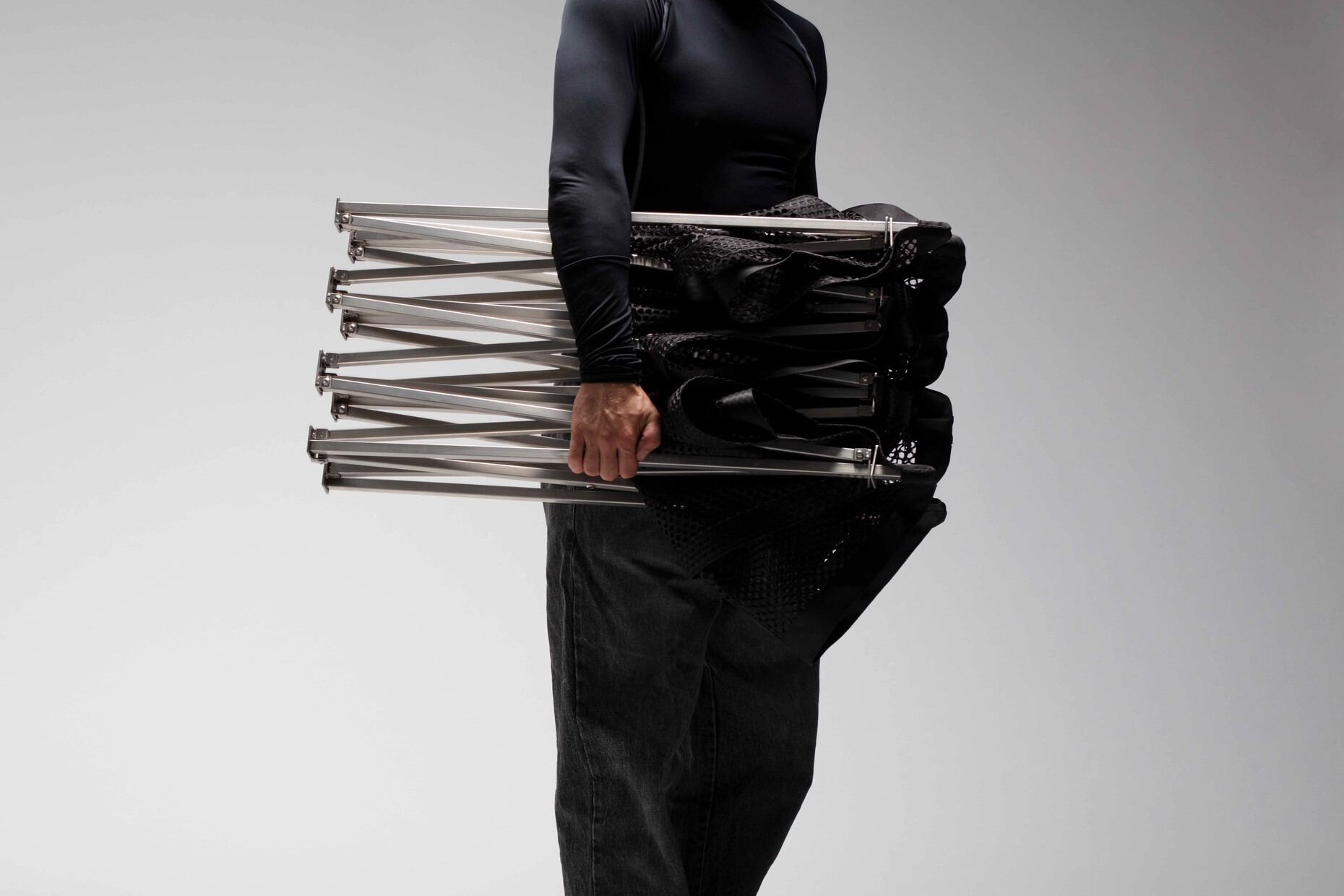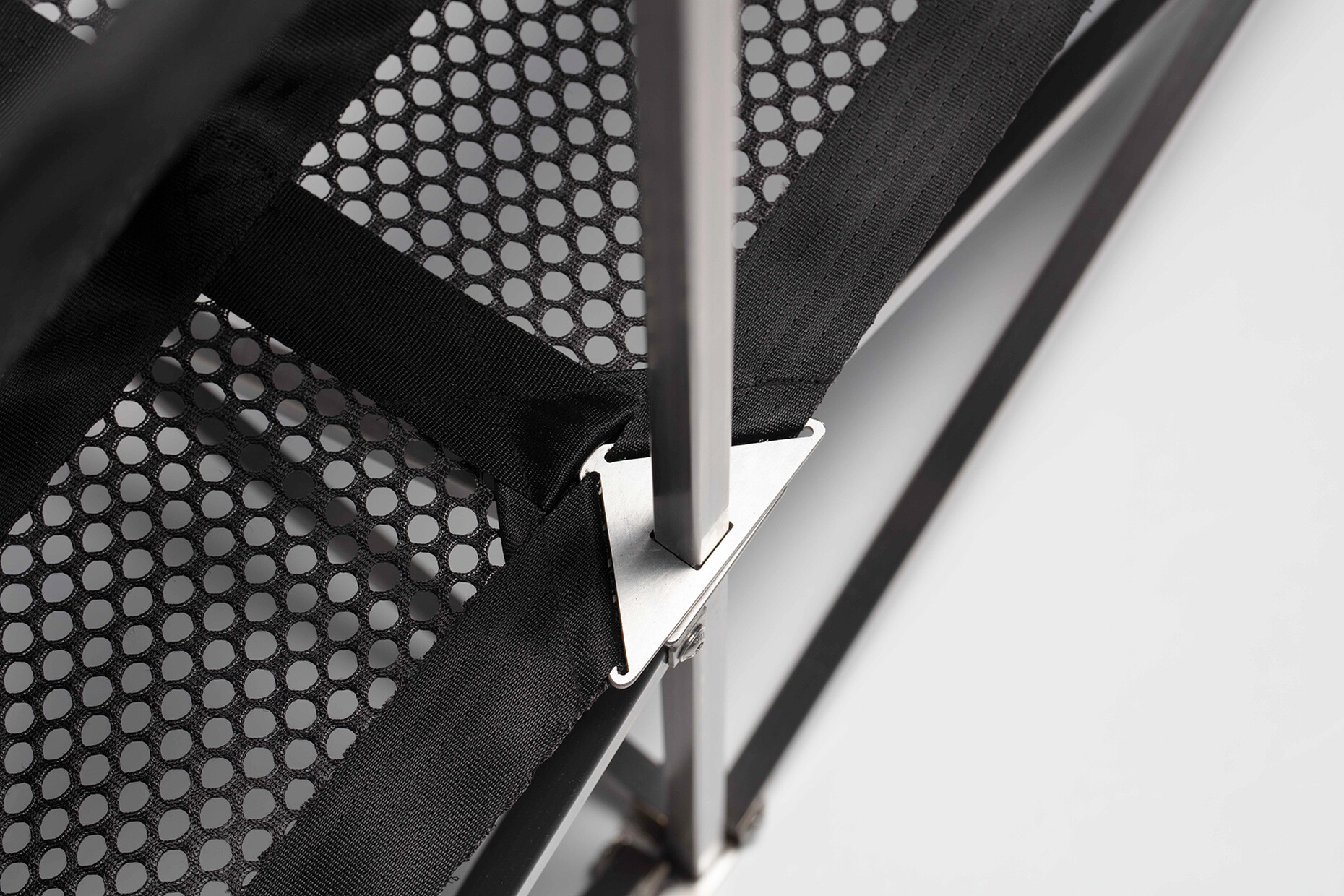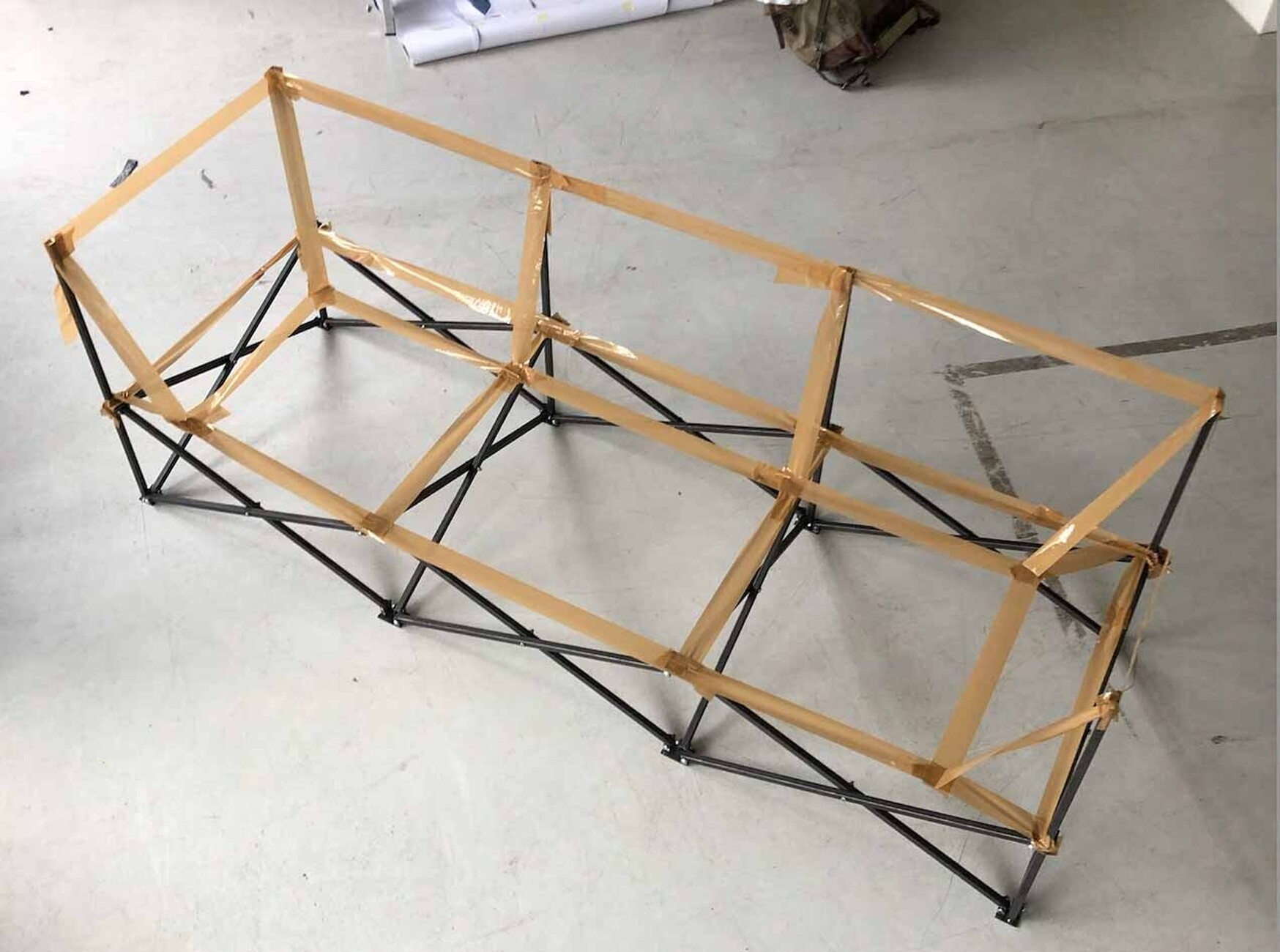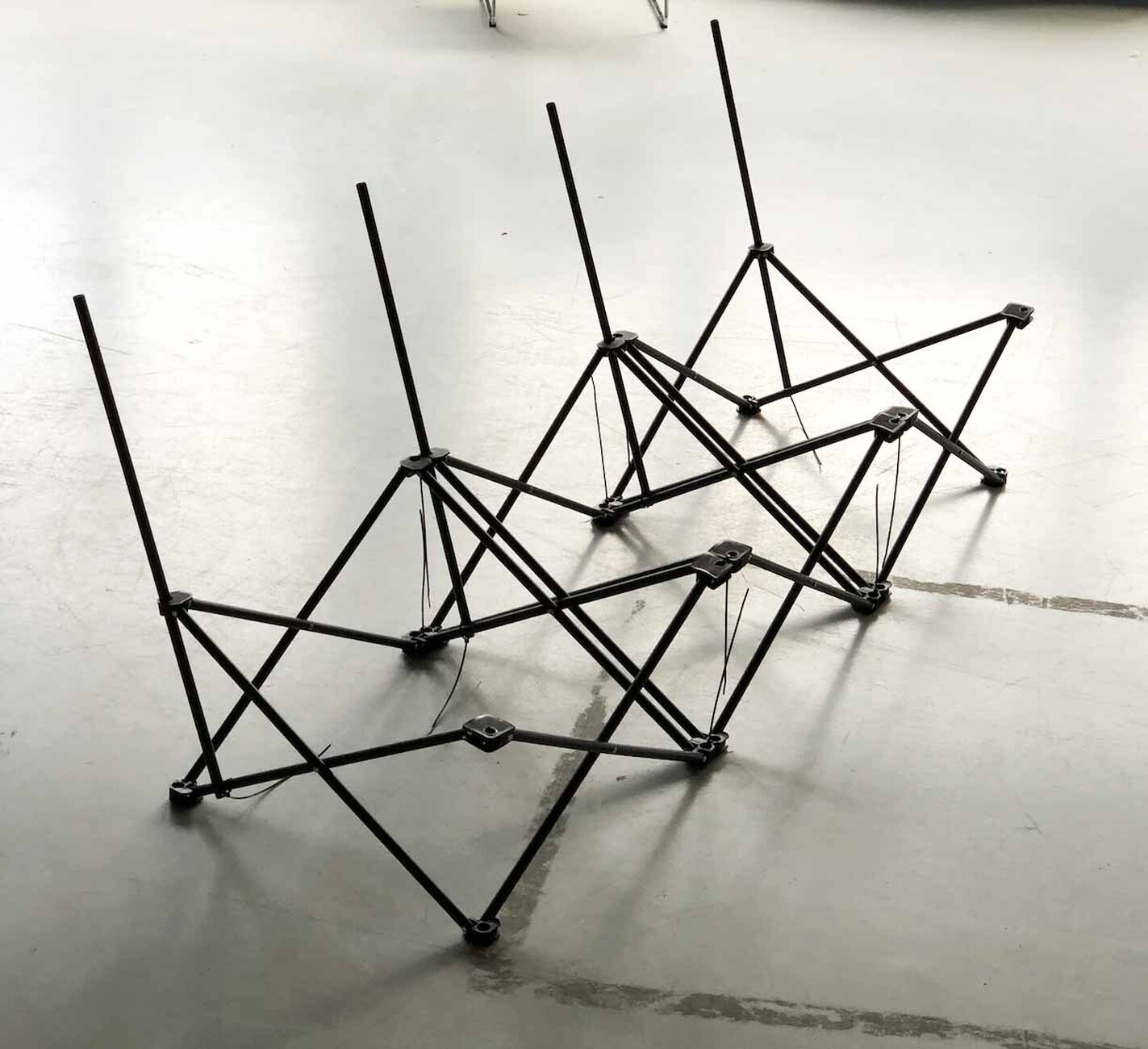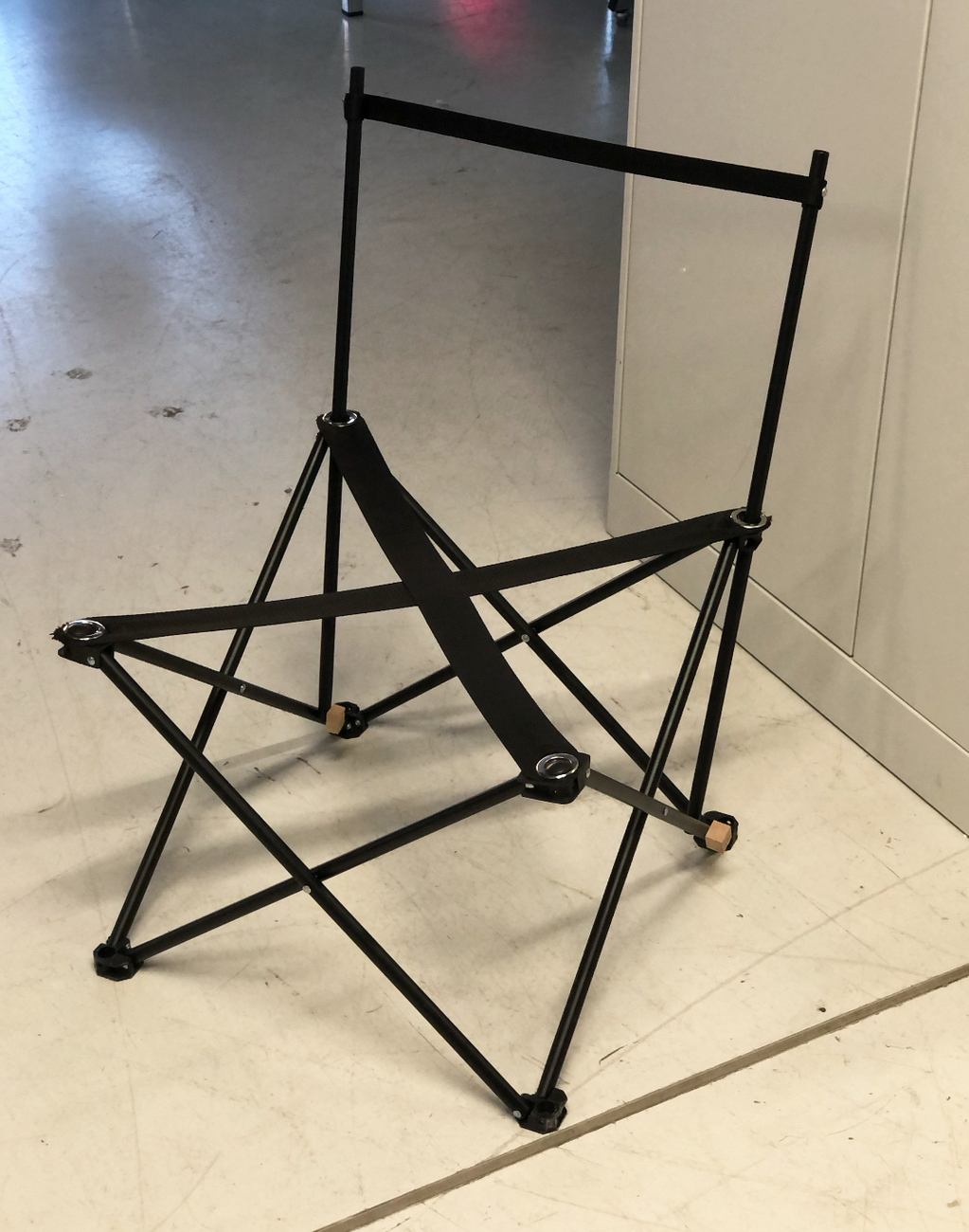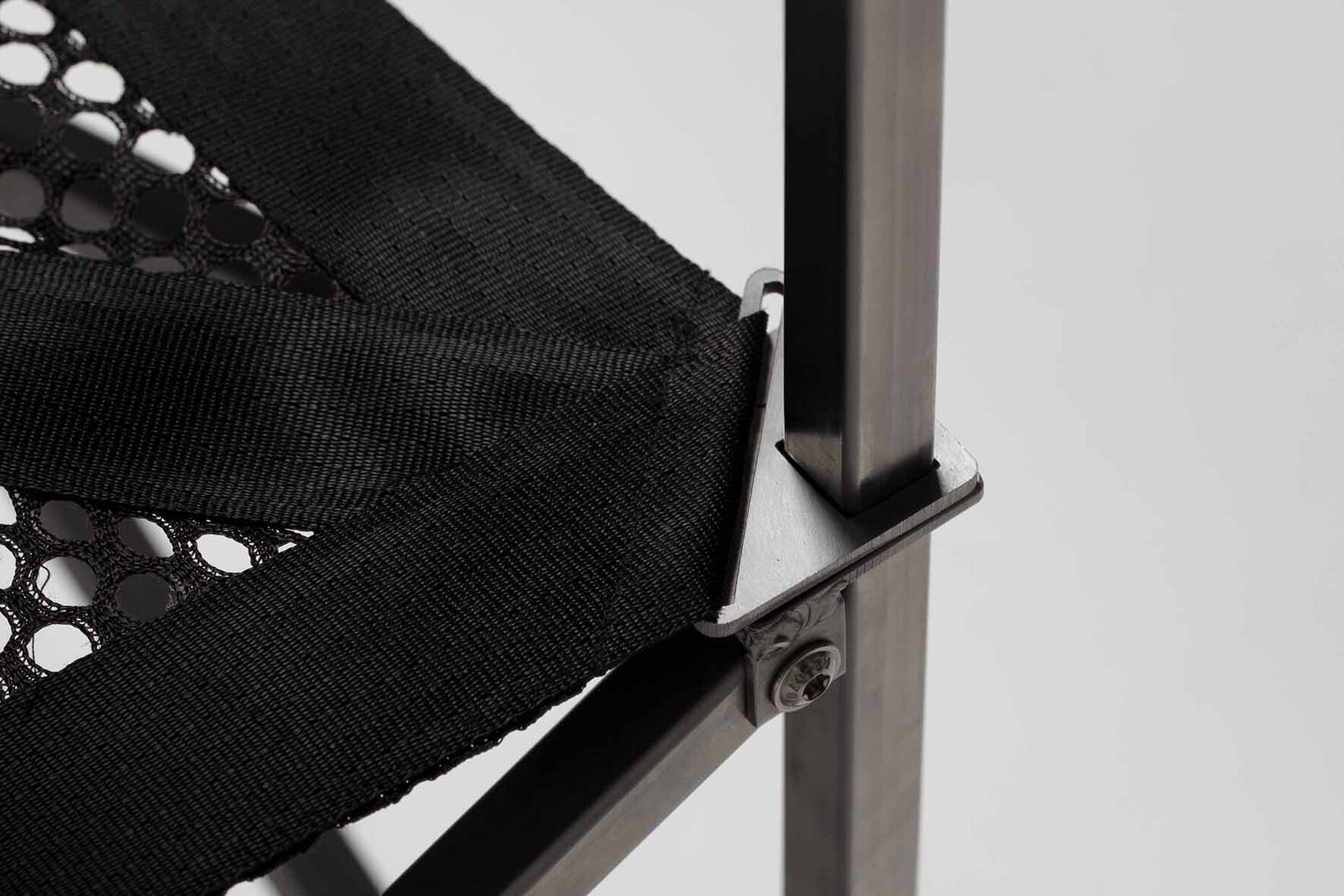YOUNG TALENTS
At Home on the Road
Sometimes the fact that something's missing doesn't become noticeable until someone fills the gap. Anton Defant's folding sofa, with the beautiful name of Ballast, is exactly one of these gap fillers. The unnoticed gap, which now stands out all the more clearly thanks to his 2022 thesis project with Stefan Diez at the University of Applied Arts in Vienna, can be referred to as "experimental furniture design". A folding frame made of well-proportioned square tubing confidently fulfils its task, and the sofa's finish is functional and intentionally inelegant. Luggage nets, like those normally used in the hold of an airplane, serve as backrests, and are light and transparent. It's an altogether strong statement, and a real standout, because whether at trade fairs, on forums for young artists or in the showroom, for a long time now there have been very few new products that aim to change conventions, that are intended to be used in a way that meets changing demands or even dare to explore unfamiliar typologies. In today's design world, new things are often a mixture of the familiar. Since furniture trade fairs were cancelled by the dozen during the coronavirus pandemic, the opportunity to compare different ideas and actually see them in built form has also been greatly reduced. This is a major disadvantage for design development, and many trade fairs are still struggling to regain their former importance. The expansive three-seater Ballast was – in a positive sense – completely different than anything at the Cologne Trade Fair. It can be pushed together in a matter of seconds, turning it into a slim package that can be carried like a rucksack.
"Ballast" also received a Special Mention in the imm cologne's Pure Talents Context competition for up-and-coming designers. The jury, which consisted of five former award winners, and who are now all well-known professionals in the industry, was delighted with the "surprisingly comfortable seating". They praised the fact that little material is required, that "Ballast" also fits into small apartments and that it meets the demands of a nomadic lifestyle. They also found praise for the sofa's potential "circularity and separation of materials", and yet were not prepared to award the designer one of the prizes for this. This is understandable, however, because "Ballast" is a provocation for the furniture industry, whose products are becoming increasingly heavy, expensive and inflexible. Established companies are striving for high-quality luxury products that can be easily used when furnishing sober, functional contemporary properties.
Anton Defant is very different in this regard, however. He says that he became a designer as a result of skateboarding, which means that he perceives cities as an accumulation of possible “spots” that can be “ridden”. In this way, the qualities of a city's surfaces are conveyed directly, not abstractly, and often physically. Defant has transferred the alpine concept of the “base camp” into urban spheres. “The fact that skating is connected to many other creative disciplines,” he writes, means that it's easy to "look for its style in many different media”. This, as well as “a bit of luck, curiosity and ambition” brought him to the Angewandte (the German name for the university in Vienna) and he admits that the same mixture still motivates him today. During his studies and in the projects he has actually built before and since graduating, Defant has devoted himself to both the technical aspects of design as well as a more playful, anarchic design methodology. Jewellery, fashion and seating inspire him. Subtle humour is occasionally used, but he attaches great importance, as he writes on his website, to the fact that “every piece reflects a commitment to reason and quality”.
A lot could be said about the Defant family. Anton was born in Kiel in 1995 and only briefly mentions that his father is Austrian and an artist, which led him to Vienna to study. Together with a friend, his sister Charlotte helped him sew the transparent, dissolved textile structure of "Ballast"; she runs her own fashion label. His cousin Jakob produces documentary films, another is a cellist. Cooperation and crossing boundaries are therefore quite common, both outside the family as well as occasionally within it. Defant is now working with a Berlin cooperative workshop in Arno Brandlhuber's San Gimignano Lichtenberg project. Here he's redesigned Luigi Colani's washbasin from the 1970s and developed a tension rail system for the Danish fashion label mfpen. And for the Italian manufacturer Campeggi he's also working on a piece of furniture, which will be presented in Milan in 2025.
But let's get back to the gap I mentioned at the beginning: Why would anyone design a three-seater sofa that folds down to the size of a rucksack? The answer is that there's both a practical and a systematic reason. Part of the motivation for his project was the fact that Defant had to move twenty times during his stay in Vienna, and then subsequently moved to Berlin. The theoretical-systematic side is connected to his involvement with folding chairs for fishing and camping. He's always been fascinated by the simplicity with which such objects can be unfolded and used. He initially tested his ideas about foldable structures with a single seat, and then developed an inexpensive folding chair using original parts when creating Campsite, which aims to change the cultural contextualisation of this simple piece of furniture.
New materials later came into play and Stefan Diez put Defant in touch with a manufacturer of robust cargo nets, such as those used in aircraft luggage holds. He used automotive seat belts as a textile load-bearing structure, and he also experimented with different types of metal frameworks into which this fabric structure could be hooked. During the design process, Defant expanded the dimensions, duplicating the basic building block and working out the details. And because they were easier for him to handle, but also to draw a clear line between his creation and normal camping furniture, he used square tubing instead of the round tubes commonly used in the outdoor world. In order to learn about suitable construction principles, Defant researched everything he could get his hands on, from fabric-covered safari and colonial chairs to camp beds and folding beds that can be pushed together to form a box.
But hasn't a sofa like this already existed for some time? Stefan Heiliger actually created his folding Bat sofa for Strässle in 1986, which was associated with an organic design vocabulary. The form was defined by a folding mechanism lying on the floor and a backrest stretched out like a sail. Der Spiegel even mentioned the piece in a short article, and the sofa is still occasionally available at auctions. And in 2007/2008, Belgian designer Laurence Humier created interconnected foldable chairs called Meeting Chairs, which are made of steel and aluminium. Today they can be found in the Museum of Modern Art, New York and the Vitra Design Museum, Weil and are only produced to order.
Ballast may also end up as a small series produced and distributed directly by the designer himself. Many identical parts would certainly make it possible. But this much is already certain: Anton Defant will continue to be a talking point for some time to come.
